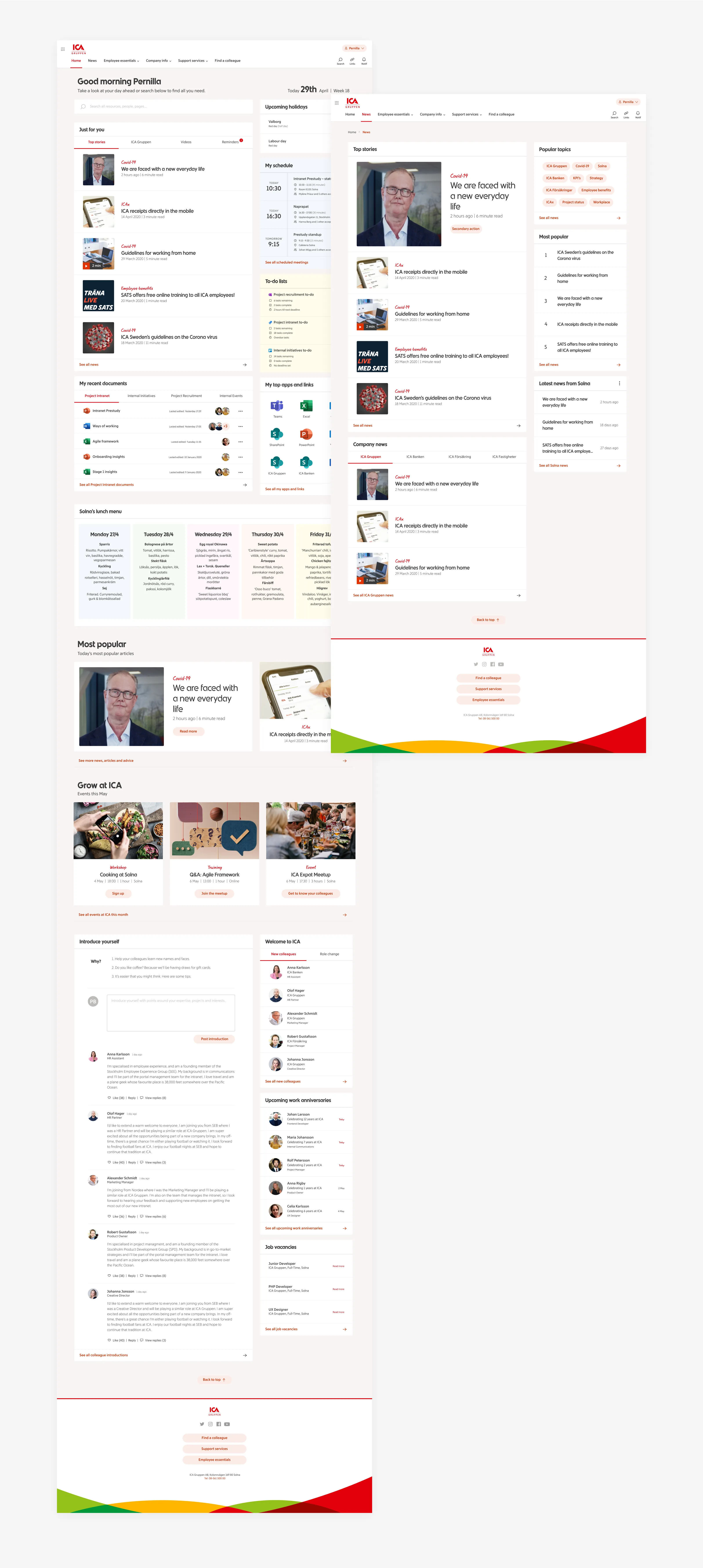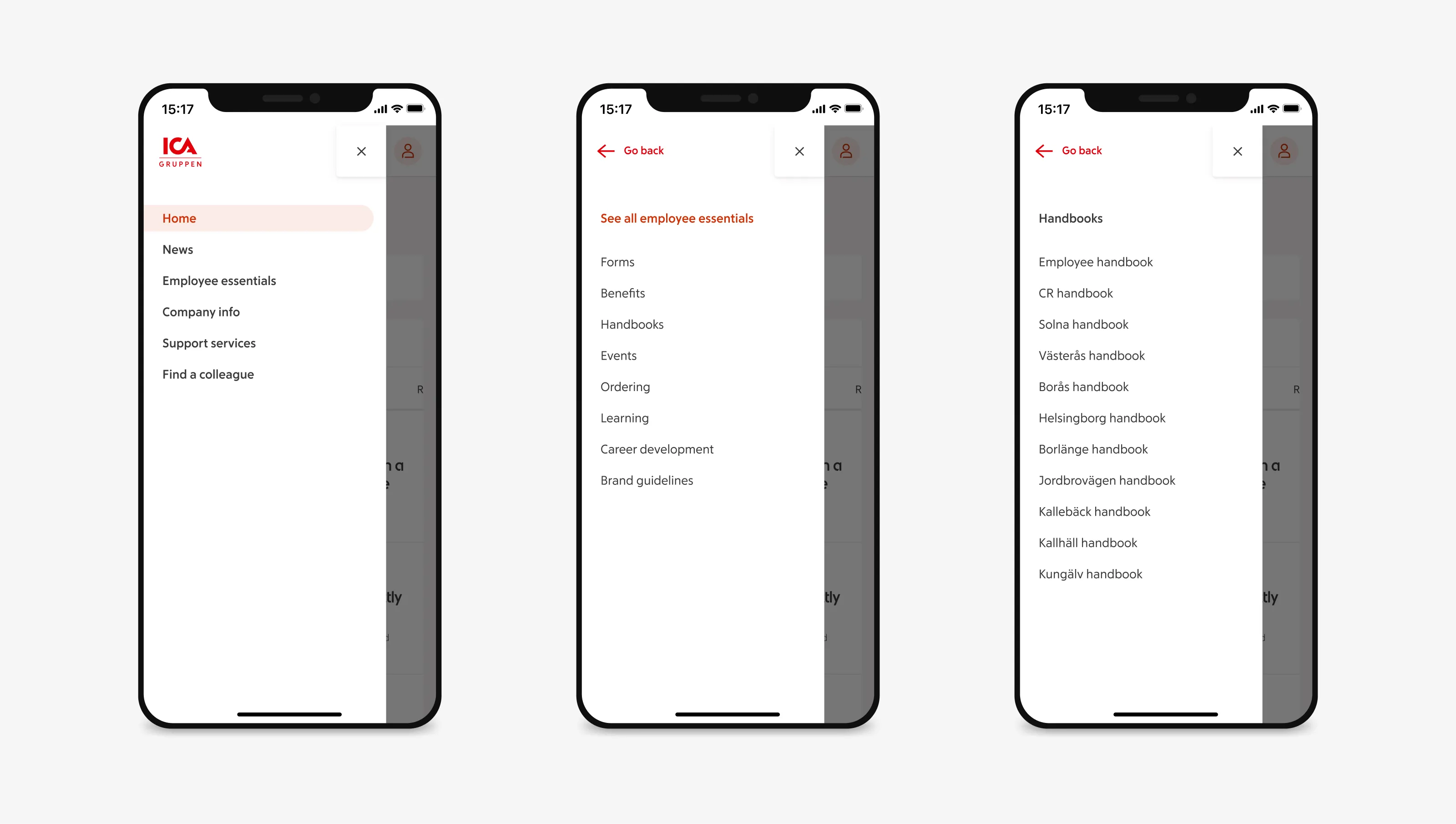Navigation re-architecture
Simplify and consolidate menus into clearer categories and pathways. This reduced navigation noise, improved findability.
Brand alignment
Apply ICA’s brand language consistently across templates, ensuring alignment with the corporate identity. This reinforced ICA’s brand cohesion across all operating companies.
Responsive design
Deliver intranet prototypes optimised for desktop and mobile. This ensured usability for employees in both office and field environments.
Iterative testing
Embed usability testing into each sprint review, making changes immediately where friction was found. This reduced risk of misalignment and validated decisions continuously.
Clarity of purpose
Provide personalised entry points and priority messaging (e.g. “What should I be working on?”). This aligned intranet with employee goals, helping them focus on what mattered most.



